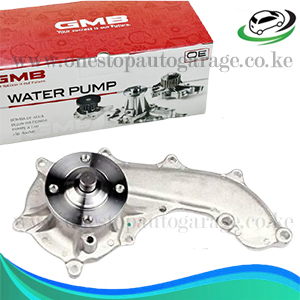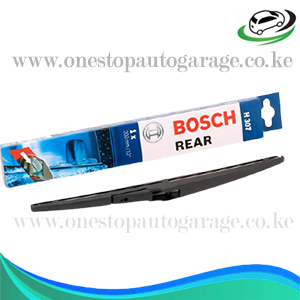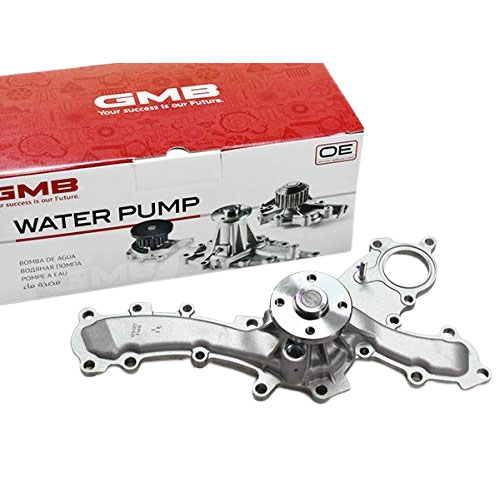-11%
Get Water Pump For 2GR-FSE / 4GR-FSE / 3GR-FE / 5GR-FE Engines in Kenya
The water pump is one of the most crucial components of a vehicle’s cooling system. It is responsible for circulating coolant through the engine block, radiator, and hoses, ensuring that the engine maintains an optimal operating temperature. Without a functioning water pump, the engine would overheat, leading to severe damage, including warped cylinder heads, blown head gaskets, and even total engine failure.
In this comprehensive guide, we will explore the function, types, benefits, signs of failure, and maintenance tips for a vehicle’s water pump.
2. What is a Water Pump?
A water pump is a mechanical device that pumps coolant through the engine’s cooling system. It is usually driven by the engine’s serpentine belt, timing belt, or timing chain and is mounted on the engine block. The pump has an impeller inside, which forces coolant to move efficiently, preventing overheating.
2.1 Components of a Water Pump
- Impeller – A rotating component with curved blades that moves coolant.
- Pump Housing – The outer casing that contains the impeller.
- Shaft and Bearings – Support the impeller and allow smooth rotation.
- Pulley or Gear – Connects to the engine and drives the pump.
- Seals and Gaskets – Prevent coolant leaks.
3. How Does a Water Pump Work?
The water pump operates by utilizing the engine’s power to circulate coolant throughout the cooling system.
- The engine generates heat as it runs.
- The water pump’s impeller spins, drawing coolant from the radiator.
- The coolant absorbs heat as it moves through the engine block and cylinder head.
- Heated coolant then flows back to the radiator, where it releases heat into the air.
- The process repeats continuously, keeping the engine at a safe temperature.
4. Types of Water Pumps
4.1 Mechanical Water Pump
- The most common type.
- Driven by a belt or chain connected to the crankshaft.
- Works continuously while the engine is running.
4.2 Electric Water Pump
- Powered by an electric motor instead of a belt.
- Used in modern vehicles, hybrids, and electric cars.
- Operates independently of engine speed, improving efficiency.
4.3 Auxiliary Water Pump
- Found in some high-performance and hybrid vehicles.
- Helps circulate coolant when the main pump is inactive.
4.4 High-Performance Water Pump
- Designed for racing and heavy-duty applications.
- Offers enhanced coolant flow and heat dissipation.
5. Benefits of a Well-Functioning Water Pump
5.1 Prevents Engine Overheating
A water pump ensures proper coolant circulation, preventing the engine from reaching dangerous temperatures.
5.2 Improves Engine Efficiency
An efficient cooling system allows the engine to operate at an optimal temperature, improving performance and fuel efficiency.
5.3 Prolongs Engine Lifespan
By preventing excessive heat buildup, the water pump helps protect vital engine components from premature wear and damage.
5.4 Reduces Risk of Costly Repairs
A failing water pump can lead to head gasket failure, warped cylinder heads, or cracked engine blocks, resulting in expensive repairs.
5.5 Enhances Heater Performance
Since engine coolant is also used for cabin heating, a functioning water pump ensures a warm cabin in cold weather.
6. Signs of a Failing Water Pump
6.1 Coolant Leaks
- Puddles of coolant (green, orange, or pink) under the vehicle.
- Leaks typically occur from seals, gaskets, or the pump housing.
6.2 Overheating Engine
- If the temperature gauge rises above normal, the water pump may not be circulating coolant properly.
6.3 Whining or Grinding Noise
- Worn-out bearings inside the water pump can cause a high-pitched whining noise.
- A loose or damaged belt can also produce noise.
6.4 Steam from the Engine Bay
- If the engine overheats, you may see steam coming from the radiator or engine.
6.5 Rust or Corrosion on the Pump
- A damaged or corroded water pump can lead to leaks and inefficient coolant circulation.
6.6 Low Coolant Levels
- A frequent drop in coolant levels may indicate a leak in the water pump or cooling system.
6.7 Poor Cabin Heater Performance
- If the heater blows cold air instead of warm air, it may be due to insufficient coolant circulation.
7. Causes of Water Pump Failure
7.1 Normal Wear and Tear
- Over time, the bearings, seals, and impeller degrade, reducing pump efficiency.
7.2 Contaminated Coolant
- Rust, dirt, or debris in the coolant can damage the impeller and seals.
7.3 Loose or Worn Belt
- If the drive belt is loose, cracked, or slipping, the pump won’t function properly.
7.4 Improper Installation
- A poorly installed water pump can cause leaks, misalignment, and premature failure.
7.5 Overheating or Coolant Pressure Issues
- Extreme heat or high pressure can weaken gaskets and cause cracks in the pump housing.
8. Water Pump Maintenance and Replacement
8.1 How Often Should a Water Pump Be Replaced?
- A typical water pump lasts between 60,000 to 100,000 miles.
- Some manufacturers recommend changing it when replacing the timing belt.
8.2 Steps to Maintain a Water Pump
Check Coolant Levels Regularly
- Ensure the coolant is at the correct level to prevent overheating.
Use the Right Coolant Type
- Follow the manufacturer’s specifications to avoid corrosion and pump damage.
Flush the Cooling System Periodically
- Flushing the coolant every 2-5 years removes debris that could damage the pump.
Inspect the Drive Belt
- A worn-out or slipping belt can reduce water pump efficiency.
Listen for Unusual Noises
- Address any whining or grinding sounds early to prevent total failure.
9. How to Replace a Water Pump
Tools Required:
- Wrenches and sockets
- Coolant
- Gasket sealant
- Drain pan
Step-by-Step Guide
- Drain Coolant: Place a drain pan under the radiator and drain the old coolant.
- Remove the Drive Belt: Loosen and remove the serpentine or timing belt.
- Remove the Old Pump: Unbolt the water pump and carefully remove it.
- Clean the Mounting Surface: Scrape off old gasket residue.
- Install the New Pump: Attach the new pump with a fresh gasket and tighten bolts.
- Refill Coolant: Add new coolant and check for leaks.
- Test the Engine: Start the engine and monitor for overheating or leaks.
10. Conclusion
The water pump is a vital component in your vehicle’s cooling system, ensuring that the engine runs at an optimal temperature. A well-maintained water pump helps prevent overheating, extends engine lifespan, and improves efficiency.
Regular maintenance, checking coolant levels, inspecting belts, and replacing the pump when necessary, will help you avoid costly engine damage.
If you notice coolant leaks, overheating, or unusual noises, don’t ignore them—a failing water pump can lead to severe engine problems. Always replace it with a high-quality part to ensure long-lasting performance and reliability. 🚗💨
Follow us on Facebook for more parts.



